Instructions for managing programs in Ubuntu via the command line
As we all know, Ubuntu has a lot of tools to support graphic delivery to install software and applications inside the system, but users have to search. However, for those who love and have spent a lot of time using this open source operating system, the process of handling and manipulating the command line simply through the keyboard will be much faster and save time. .
APT:
In essence, Linux manages the software, applications in the system through packages - Package , and each individual part of the application contains a graphical interface, modules and a number of different support libraries. Besides, most of these programs connect several installation packages independently of each other, while others allow users to choose which packages to install or not. This information can cause confusion, confusing for users, so Linux has integrated an application package to manage them all.
Each Linux distribution version has a separate management system, for example Ubuntu is Advanced Packaging Tool . In addition, each system is supported with various features such as adding Repository , searching, installing and removing support packages by option, upgrading or updating . Basically, owls The method of using the command line is very simple, but in fact, not everyone can catch it.
APT requires a minimum level of Super - User for user accounts, as it will relate to each aspect of the system during the operation, so in Ubuntu , we will need to use the command sudo .
Search for Packages:
The basic syntax for searching software is:
apt-cache search [search term 1] [search term 2] . [search term n]
You only need to replace [search terms] with the software name, and not include the [] mark. Specific examples are as follows:

Besides, we can conduct a search by general descriptive information, or name. Some keywords will return a series of corresponding results, so use the following command to monitor:
apt-cache search [search terms] | less
You will notice the | In the middle (along with the key), this collapsed statement allows you to shorten the entire list of results displayed, then browse with the scroll keys up, down, left, right, Space, B and Enter . Press Q to exit and return to the command screen.
Assign more Repository:
On the other hand, we can find a lot of software based on online Repository . For example, Ubuntu Tweak - a utility that allows users to change 'hidden' settings in the system, stored on another repository. If you assign this repository instead of downloading and installing the file separately, the system will notify you of the changes and always update automatically. Or users can assign and change the list of repositories by editing the original file of APT:
sudo nano /etc/apt/sources.list
From Ubuntu 9.10 Karmic Koala onwards there have been many changes in this, much simpler than before:
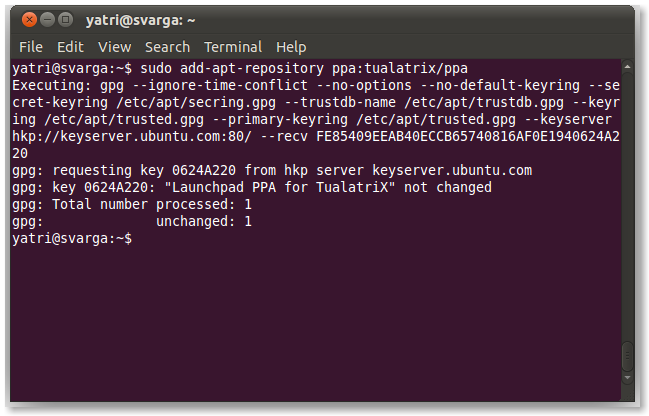
sudo add-apt-repository [repository name]
For example, when applying on Ubuntu Tweak repository, we will have to type the following command:
sudo add-apt ppa repository: tualatrix / ppa
Update source:
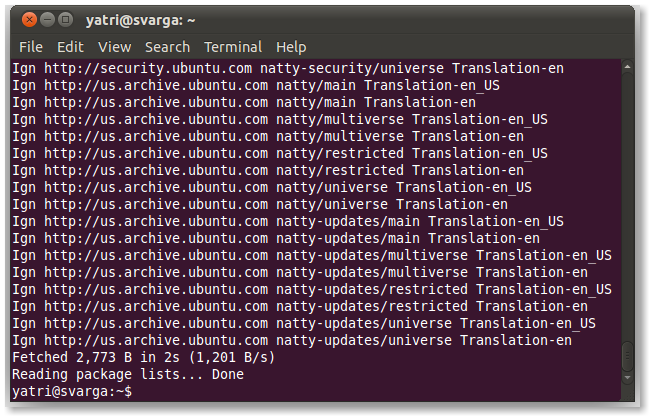
Basically, after completing the repository assignment, we must update the list of packages:
sudo apt-get update
The above command will perform the entire package update from all the repositories. And please note that it should only be applied after assigning the repository.
Setting:
When you have finished the above basic steps, then you need to proceed with the installation based on the following command syntax:
sudo apt-get install [package name 1] [package name 2] . [package name n]
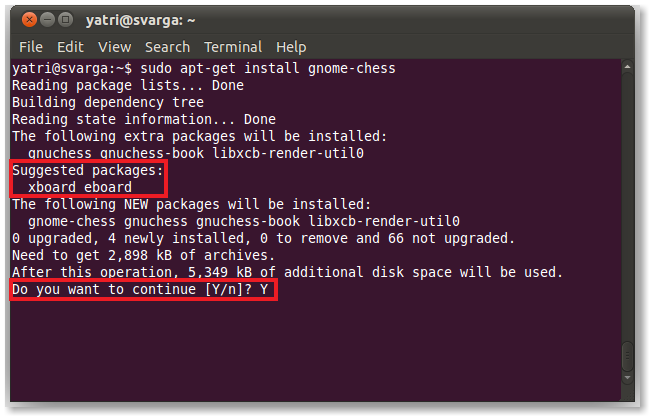
The above command will perform the download and installation of the listed packages. If this process requires additional support packages, they will also be completed. Sometimes, users will see the entire list of requests, and they just need to select the packages that are really needed. For the rest, you will see the main packages, and when installing this package, the included support components will also be installed according to:
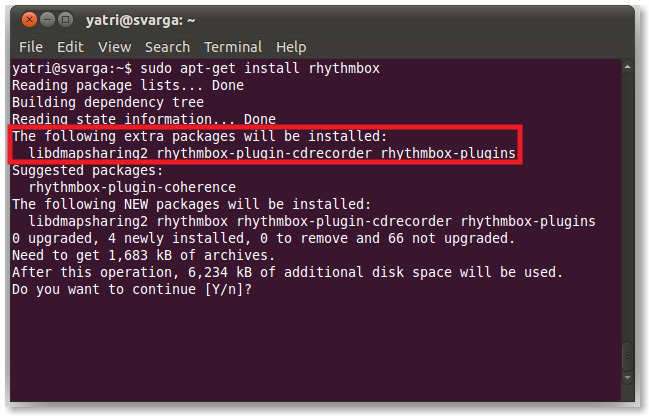
Delete Package:
If you want to remove a certain program, please remove the installation package first:
sudo apt-get remove [package name 1] [package name 2] . [package name n]
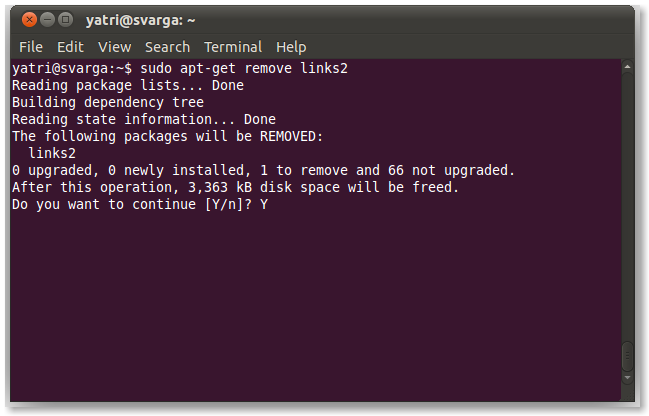
If you want to remove the configuration, settings as well as the related directories, then add the purge option as follows:
sudo apt-get remove -purge [package name 1] [package name 2] . [package name n]
There are 2 dashes here, this parameter will be useful if the program to be removed does not work properly. This way, we will completely remove and no longer have any files of the program. Most of the time, users will have to choose between the main packages and the support included to remove them, but if you want to do it automatically, use the command:
sudo apt-get autoremove
Upgrade software:
Basically, open source software has relatively short updates and upgrades. If you want to do this, please use the following command:
sudo apt-get upgrade [package name 1] [package name 2] . [package name n]
Or apply to the entire software with the syntax:
sudo apt-get upgrade
The above command will notify you of the exact number and which package to update, then proceed with confirmation before applying. But one thing to note is that we must upgrade first, and the update process will replace the old version of the program with a newer version. The process is as follows: the same package name will be required, and simply the old version is completely replaced.
However, there are some cases that some software requires installation packages with slightly different names, so all old files are deleted and replaced with new data. And sometimes, the new version of any program requires additional support, so users should use dist-upgrade command:
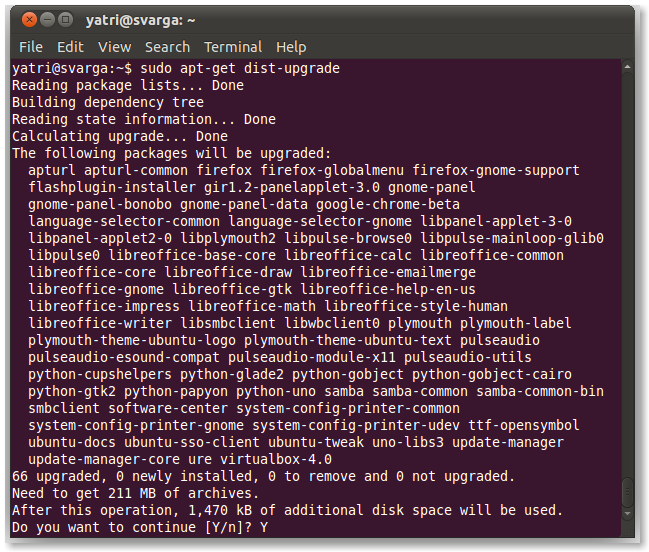
sudo apt-get dist-upgrade [package name 1] [package name 2] . [package name n]
sudo apt-get dist-upgrade
If you want to know which specific installation package details you need to upgrade, just add the -s option behind:
sudo apt-get -s upgrade
This command is really useful if you are not sure whether this update affects other components in the system.
'Clean up':
After downloading, Ubuntu will temporarily store these files in case of reuse. However, you can still remove this cache to save disk space with:
sudo apt-get clean
But if you just want to keep the latest version, use the following command:
sudo apt-get autoclean
Check which software has been installed:
If you want to check which applications are installed, we will use dpkg:
sudo dpkg -list
Browse the entire list with the command:
sudo dpkg –list | less
Search with the accompanying grep parameter:
dpkg –list | grep [search term]
If you find any suitable results, the system will display full and clear information for users. Besides, we can use the shortened syntax below to search:
dpkg –l 'search term'
The search keyword must be enclosed in parentheses (''), can be used in lowercase or uppercase:
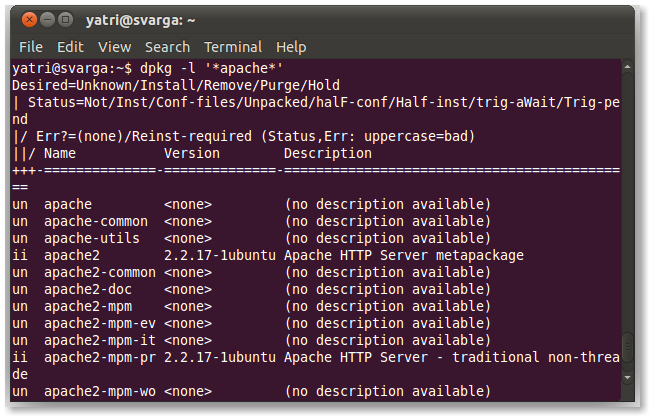
Here are some basic and detailed information about the process of finding, installing, upgrading or removing software in Ubuntu using the command line. We look forward to receiving your comments and sharing your experience through the comment section below. Good luck!
You should read it
- Some basic Terminal commands in Linux Mint 11
- Installing Ubuntu in VirtualBox does not need DVD or USB
- Instructions for installing Ubuntu on VMware Workstation - Part 1
- Instructions for upgrading Windows Phone 7 operating system
- Instructions for creating virtual hosts with Apache in Ubuntu
- 5 things to do after upgrading to Ubuntu 22.04 LTS
- How to Open the Terminal App on Mac
- Tips and tricks after installing Ubuntu
May be interested
- Ubuntu Server Upgrade Steps
 ubuntu also constantly updates itself with newer versions. if you're using the desktop, you'll be prompted when an update is available and receive instructions on the process. however, on the server, you may not have this privilege. so updating ubuntu server will involve running a few command lines.
ubuntu also constantly updates itself with newer versions. if you're using the desktop, you'll be prompted when an update is available and receive instructions on the process. however, on the server, you may not have this privilege. so updating ubuntu server will involve running a few command lines. - How to Install Ubuntu Packages
 this wikihow will show you how to install packages on ubuntu using the ubuntu software center, the synaptic package manager, and a command-line window. the ubuntu software center is similar to the app store for macos and the microsoft...
this wikihow will show you how to install packages on ubuntu using the ubuntu software center, the synaptic package manager, and a command-line window. the ubuntu software center is similar to the app store for macos and the microsoft... - Instructions for using Command Prompt
 deep in windows is a command-line world that is obscure. in this article, we will show you how to solve errors and make your computer more secure.
deep in windows is a command-line world that is obscure. in this article, we will show you how to solve errors and make your computer more secure. - 5 reasons why people love the Linux command line
 many people are afraid of the command line. they see it as something for software developers or geeks. but the command line is merely another way of interacting with a pc, and there are some tasks that are very easy to do with the cli.
many people are afraid of the command line. they see it as something for software developers or geeks. but the command line is merely another way of interacting with a pc, and there are some tasks that are very easy to do with the cli. - 5 best command line emulation software for Windows 10
 currently, users can get a shell within windows 10, but many still prefer the more configurable command line emulator applications. so this article will introduce you to five of the best command line emulation software for windows 10.
currently, users can get a shell within windows 10, but many still prefer the more configurable command line emulator applications. so this article will introduce you to five of the best command line emulation software for windows 10. - Clip command in Windows
 clip command redirects the command output from the command line to the windows clipboard. you can then paste this text output into other programs.
clip command redirects the command output from the command line to the windows clipboard. you can then paste this text output into other programs. - How to check internet speed with the command line in Linux
 today, tipsmake.com will read how to check the speed of the internet from the command line via terminal in various popular linux distributions, including ubuntu, fedora and arch linux.
today, tipsmake.com will read how to check the speed of the internet from the command line via terminal in various popular linux distributions, including ubuntu, fedora and arch linux. - How to use the Linux command line on Android with Termux
 android is a very operating system 'capacity with more and more desktop accessibility applications. however, sometimes you want to make some things on android that can be as easy as desktop. fortunately, you can use the termux tool, which builds on the existing infrastructure and provides a command line environment that allows you to install real linux applications on your android device.
android is a very operating system 'capacity with more and more desktop accessibility applications. however, sometimes you want to make some things on android that can be as easy as desktop. fortunately, you can use the termux tool, which builds on the existing infrastructure and provides a command line environment that allows you to install real linux applications on your android device. - How to create a command line program in Python with Click
 click is a python package to write command line interfaces with as little code as possible. this article will show you how to use click to create the command line program.
click is a python package to write command line interfaces with as little code as possible. this article will show you how to use click to create the command line program. - How to create and run shell scripts in Ubuntu 22.04
 shell is a user-written command interpreter. script shell helps users write and execute multiple commands at the same time. in this article, readers will learn how to execute shell scripts through command line input.
shell is a user-written command interpreter. script shell helps users write and execute multiple commands at the same time. in this article, readers will learn how to execute shell scripts through command line input.










 Simple way to create Quicklist for Ubuntu Unity Launcher
Simple way to create Quicklist for Ubuntu Unity Launcher Some basic Terminal commands in Linux Mint 11
Some basic Terminal commands in Linux Mint 11 Directory tree structure in Linux
Directory tree structure in Linux 10 reasons to switch to Linux right in 2012
10 reasons to switch to Linux right in 2012 How to configure DNS Server on Ubuntu Server 11.04
How to configure DNS Server on Ubuntu Server 11.04 Instructions for installing Windows software on Linux with PlayOnLinux
Instructions for installing Windows software on Linux with PlayOnLinux